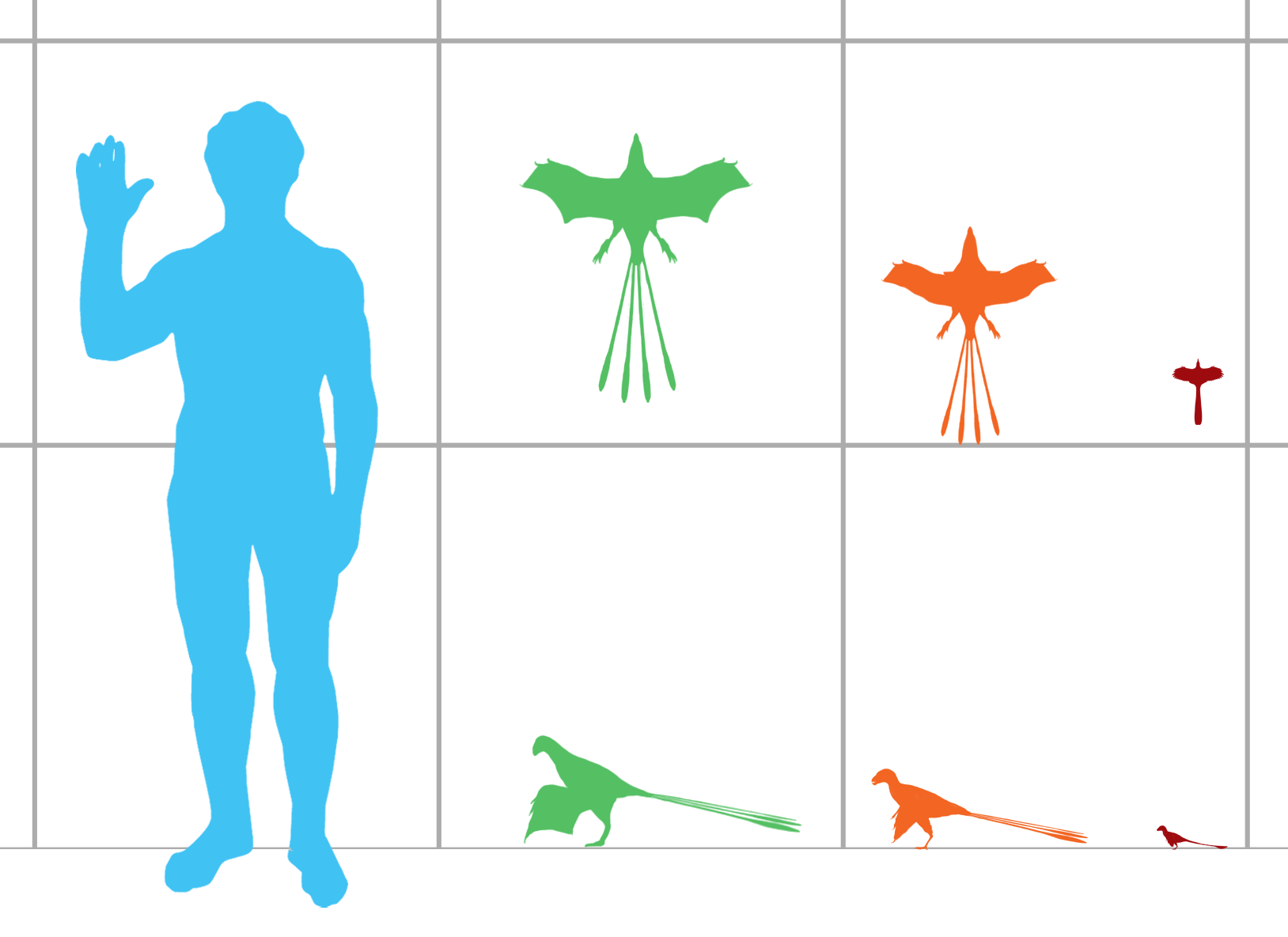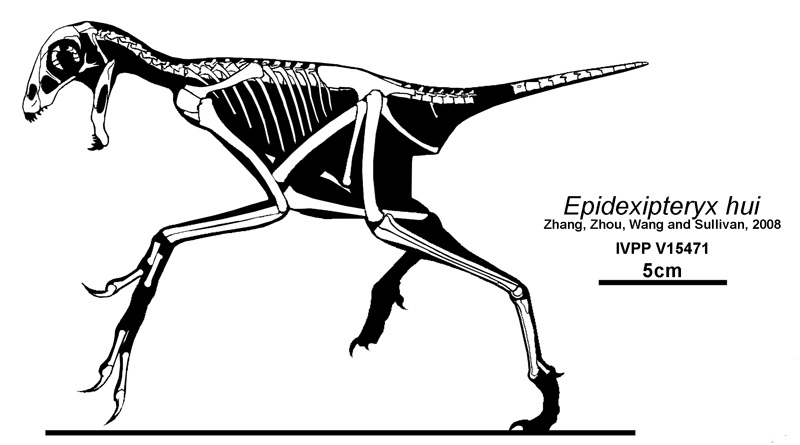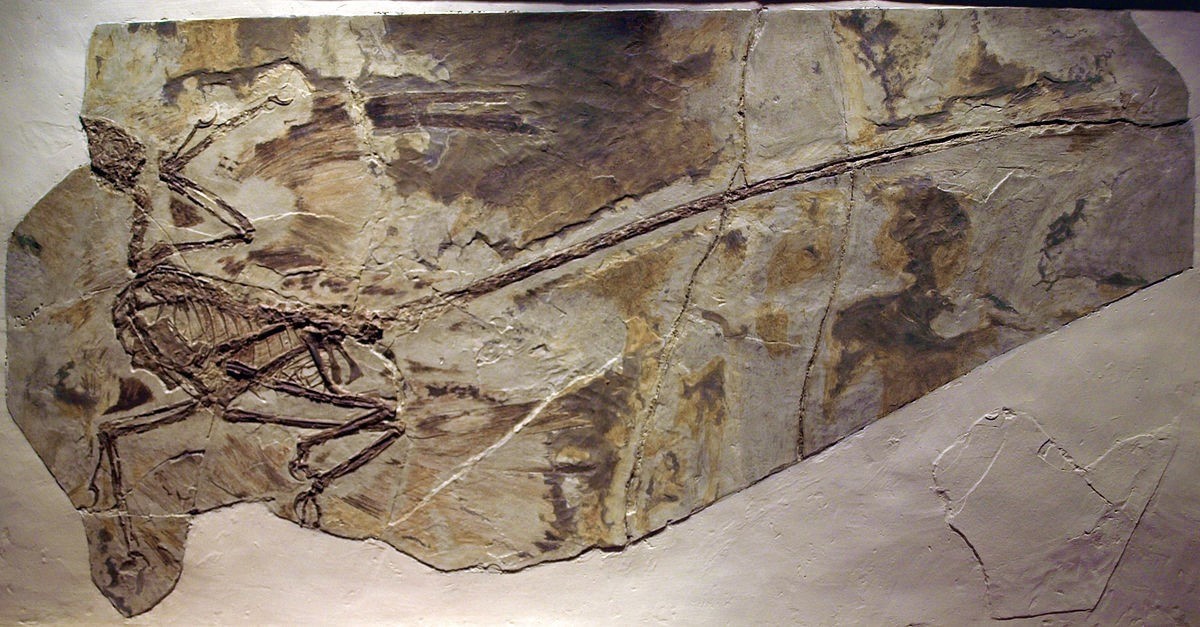|
Scansoriopterygidae
Scansoriopterygidae (meaning "climbing wings") is an extinct family of climbing and gliding maniraptoran dinosaurs. Scansoriopterygids are known from five well-preserved fossils, representing four species, unearthed in the Tiaojishan Formation fossil beds (dating to the mid-late Jurassic Period) of Liaoning and Hebei, China. '' Scansoriopteryx heilmanni'' (and its likely synonym ''Epidendrosaurus ninchengensis'') was the first non-avian dinosaur found that had clear adaptations to an arboreal or semi-arboreal lifestyle–it is likely that they spent much of their time in trees. Both specimens showed features indicating they were juveniles, which made it difficult to determine their exact relationship to other non-avian dinosaurs and birds. It was not until the description of '' Epidexipteryx hui'' in 2008 that an adult specimen was known. In 2015, the discovery of another, larger adult specimen belonging to the species '' Yi qi'' showed that scansoriopterygids were not only ... [...More Info...] [...Related Items...] OR: [Wikipedia] [Google] [Baidu] |
Epidexipteryx
''Epidexipteryx'' is a genus of small paravian dinosaurs, known from one fossil specimen in the collection of the Institute of Vertebrate Paleontology and Paleoanthropology in Beijing. ''Epidexipteryx'' represents the earliest known example of ornamental feathers in the fossil record. Discovery The type specimen is catalog number IVPP V 15471. The specific name, ''Epidexipteryx hui'' ("Hu's display feather"), and its Chinese name ''Hushi Yaolong'' ("Hu Yaoming's dragon") were coined in memory of paleomammologist Hu Yaoming. Due to a pre-publication error,Dr. Thomas Holtz, Jr. "The mistaken scansoripterygid". Message to the Dinosaur Mailing List (October 1, 2008) a manuscript of the ''Epidexipteryx hui'' description first appeared on a preprint Web portal in late September 2008. The paper was officially published in the October 23, 2008 issue of the journal ''Nature''. Description ''E. hui'' is known from a well-preserved partial skeleton that includes four long feathers o ... [...More Info...] [...Related Items...] OR: [Wikipedia] [Google] [Baidu] |
Epidexipteryx Hui
''Epidexipteryx'' is a genus of small paravian dinosaurs, known from one fossil specimen in the collection of the Institute of Vertebrate Paleontology and Paleoanthropology in Beijing. ''Epidexipteryx'' represents the earliest known example of ornamental feathers in the fossil record. Discovery The type specimen is catalog number IVPP V 15471. The specific name, ''Epidexipteryx hui'' ("Hu's display feather"), and its Chinese name ''Hushi Yaolong'' ("Hu Yaoming's dragon") were coined in memory of paleomammologist Hu Yaoming. Due to a pre-publication error,Dr. Thomas Holtz, Jr. "The mistaken scansoripterygid". Message to the Dinosaur Mailing List (October 1, 2008) a manuscript of the ''Epidexipteryx hui'' description first appeared on a preprint Web portal in late September 2008. The paper was officially published in the October 23, 2008 issue of the journal ''Nature''. Description ''E. hui'' is known from a well-preserved partial skeleton that includes four long feathers on ... [...More Info...] [...Related Items...] OR: [Wikipedia] [Google] [Baidu] |
Yi (dinosaur)
''Yi'' is a genus of scansoriopterygid dinosaurs from the Late Jurassic of China. Its only species, ''Yi qi'' (Mandarin pronunciation: ; from and ), is known from a single fossil specimen of an adult individual found in Middle or Late Jurassic Tiaojishan Formation of Hebei, China, approximately 159 million years ago. It was a small, possibly tree-dwelling (arboreal) animal. Like other scansoriopterygids, ''Yi'' possessed an unusual, elongated third finger, that appears to have helped to support a membranous gliding plane made of skin. The planes of ''Yi qi'' were also supported by a long, bony strut attached to the wrist. This modified wrist bone and membrane-based plane is unique among all known dinosaurs, and might have resulted in wings similar in appearance to those of bats. Discovery and naming The first and only known fossil specimen of ''Yi qi'' was found by a farmer, Wang Jianrong, in a quarry near Mutoudeng Village ( Qinglong County, Hebei). Wang sold the fossil to the ... [...More Info...] [...Related Items...] OR: [Wikipedia] [Google] [Baidu] |
Maniraptora
Maniraptora is a clade of coelurosaurian dinosaurs which includes the birds and the non-avian dinosaurs that were more closely related to them than to '' Ornithomimus velox''. It contains the major subgroups Avialae, Deinonychosauria, Oviraptorosauria and Therizinosauria. ''Ornitholestes'' and the Alvarezsauroidea are also often included. Together with the next closest sister group, the Ornithomimosauria, Maniraptora comprises the more inclusive clade Maniraptoriformes. Maniraptorans first appear in the fossil record during the Jurassic Period (see '' Eshanosaurus''), and survive today as living birds. Description Maniraptorans are characterized by long arms and three-fingered hands (though reduced or fused in some lineages), as well as a "half-moon shaped" (semi-lunate) bone in the wrist ( carpus). In 2004, Tom Holtz and Halszka Osmólska pointed out six other maniraptoran characters relating to specific details of the skeleton. Unlike most other saurischian dinosaurs, ... [...More Info...] [...Related Items...] OR: [Wikipedia] [Google] [Baidu] |
Scansoriopteryx
''Scansoriopteryx'' ("climbing wing") is a genus of maniraptoran dinosaur. Described from only a single juvenile fossil specimen found in Liaoning, China, ''Scansoriopteryx'' is a sparrow-sized animal that shows adaptations in the foot indicating an arboreal (tree-dwelling) lifestyle. It possessed an unusual, elongated third finger which may have supported a membranous wing, much like the related '' Yi qi''. The type specimen of ''Scansoriopteryx'' also contains the fossilized impression of feathers.Czerkas, S.A., and Yuan, C. (2002). "An arboreal maniraptoran from northeast China." Pp. 63-95 in Czerkas, S.J. (Ed.), ''Feathered Dinosaurs and the Origin of Flight.'' The Dinosaur Museum Journal 1. The Dinosaur Museum, Blanding, U.S.APDF abridged version/ref> Most researchers regard this genus as a synonym of ''Epidendrosaurus'', with some preferring to treat ''Scansoriopteryx'' as the junior synonym,Padian, Kevin. (2001) "Basal Avialae" in "The Dinosauria" in "The Dinosauria: Sec ... [...More Info...] [...Related Items...] OR: [Wikipedia] [Google] [Baidu] |
Ambopteryx
''Ambopteryx'' (meaning "both wing") is a genus of scansoriopterygid dinosaur from the Oxfordian stage of the Late Jurassic of China. It is the second dinosaur to be found with both feathers and bat-like membranous wings. ''Yi'', the first such dinosaur, was described in 2015 and is the sister taxon to ''Ambopteryx''. The holotype specimen is thought to be a sub-adult or adult. The specimen is estimated to have had a body length of and a weight of . The genus includes one species, ''Ambopteryx longibrachium''. Etymology The generic name ''Ambopteryx'' is derived from the Latin word ''ambo'' meaning "both" and Ancient Greek word ''πτέρυξ'' (''pteryx'') meaning "wing", a reference to the animal's membranous wings and bird-like body plan. The specific name ''longibrachium'' is derived from the Latin words ''longus'' meaning "long" and ''brachium'' meaning "upper arm". Holotype The holotype specimen, IVPP V24192, is an articulated and nearly complete skeleton with associa ... [...More Info...] [...Related Items...] OR: [Wikipedia] [Google] [Baidu] |
Birds
Birds are a group of warm-blooded vertebrates constituting the class Aves (), characterised by feathers, toothless beaked jaws, the laying of hard-shelled eggs, a high metabolic rate, a four-chambered heart, and a strong yet lightweight skeleton. Birds live worldwide and range in size from the bee hummingbird to the ostrich. There are about ten thousand living species, more than half of which are passerine, or "perching" birds. Birds have whose development varies according to species; the only known groups without wings are the extinct moa and elephant birds. Wings, which are modified forelimbs, gave birds the ability to fly, although further evolution has led to the loss of flight in some birds, including ratites, penguins, and diverse endemic island species. The digestive and respiratory systems of birds are also uniquely adapted for flight. Some bird species of aquatic environments, particularly seabirds and some waterbirds, have further evolved for swi ... [...More Info...] [...Related Items...] OR: [Wikipedia] [Google] [Baidu] |
Dinosaur
Dinosaurs are a diverse group of reptiles of the clade Dinosauria. They first appeared during the Triassic period, between 243 and 233.23 million years ago (mya), although the exact origin and timing of the evolution of dinosaurs is the subject of active research. They became the dominant terrestrial vertebrates after the Triassic–Jurassic extinction event 201.3 mya; their dominance continued throughout the Jurassic and Cretaceous periods. The fossil record shows that birds are feathered dinosaurs, having evolved from earlier theropods during the Late Jurassic epoch, and are the only dinosaur lineage known to have survived the Cretaceous–Paleogene extinction event approximately 66 mya. Dinosaurs can therefore be divided into avian dinosaurs—birds—and the extinct non-avian dinosaurs, which are all dinosaurs other than birds. Dinosaurs are varied from taxonomic, morphological and ecological standpoints. Birds, at over 10,700 living species ... [...More Info...] [...Related Items...] OR: [Wikipedia] [Google] [Baidu] |
Pedopenna
''Pedopenna'' (meaning "foot feather") is a genus of small, feathered, maniraptoran dinosaur from the Daohugou Beds in China. It is possibly older than ''Archaeopteryx'', though the age of the Daohugou Beds where it was found is debated. A majority of studies suggest that beds probably date from between the late Middle Jurassic (168 million years ago) and early Late Jurassic Period (164-152 million years ago). The name ''Pedopenna'' refers to the long pennaceous feathers on the metatarsus; ''daohugouensis'' refers to the locality of Daohugou, where the holotype was found. ''Pedopenna daohugouensis'' probably measured 1 meter (3 ft) or less in length, but since this species is only known from the hind legs, the actual length is difficult to estimate. ''Pedopenna'' was originally classified as a paravian, the group of maniraptoran dinosaurs that includes both deinonychosaurs and avialans (the lineage including modern birds), but some scientists have classified it as a ... [...More Info...] [...Related Items...] OR: [Wikipedia] [Google] [Baidu] |







.jpg)
